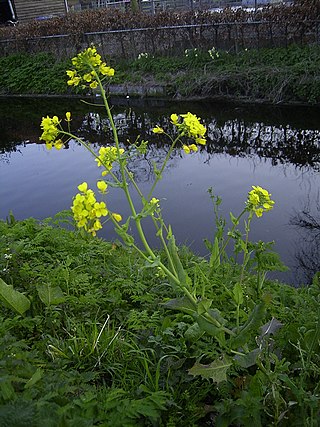
Brassica is a genus of plants in the cabbage and mustard family (Brassicaceae). The members of the genus are informally known as cruciferous vegetables, cabbages, mustard plants, or simply brassicas. Crops from this genus are sometimes called cole crops—derived from the Latin caulis, denoting the stem or stalk of a plant.
Cypress is a common name for various coniferous trees or shrubs from the Cupressus genus of the Cupressaceae family, typically found in warm-temperate and subtropical regions of Asia, Europe, and North America.
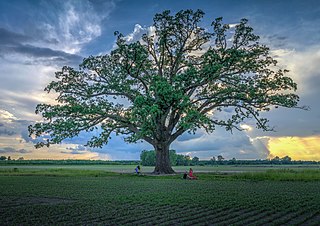
Quercus macrocarpa, the bur oak or burr oak, is a species of oak tree native to eastern North America. It is in the white oak section, Quercus sect. Quercus, and is also called mossycup oak, mossycup white oak, blue oak, or scrub oak. The acorns are the largest of any North American oak, and are important food for wildlife.

Brassica oleracea is a plant species from family Brassicaceae that includes many common cultivars used as vegetables, such as cabbage, broccoli, cauliflower, kale, Brussels sprouts, collard greens, Savoy cabbage, kohlrabi, and gai lan.
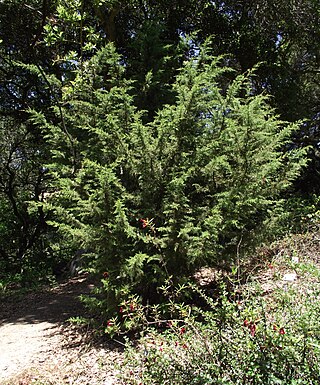
Hesperocyparis goveniana commonly known as Californian cypress and Gowen cypress, is a species of western cypress that is endemic to a small area of coastal California near Monterey. It was formerly classified as Cupressus goveniana.

Carissa macrocarpa is a shrub native to tropical and southern Africa. It is commonly known as the Natal plum and, in South Africa, the large num-num. In Zulu, as well as in the Bantu tribes of Uganda, it is called Amathungulu or umThungulu oBomvu. In Afrikaans the fruit is called noem-noem and in Venda language it is called'Thungulu'.

Larix potaninii is a species of larch conifer in the family Pinaceae. It is found in China and Nepal. The one of southernmost species of the genus Larix, the range of Larix potaninii extends southward almost to 27° N.
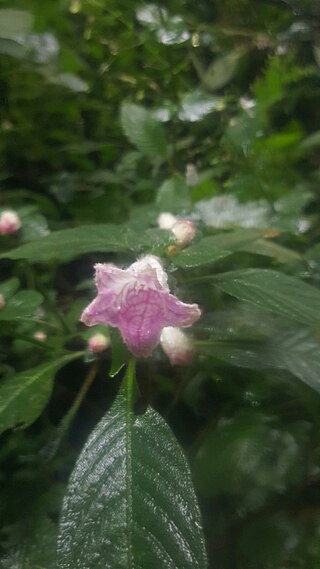
Acanthopale is a plant genus of shrubs or subshrubs in the Acanthaceae plant family. The genus name is based on the classic Greek words for thorn ákantha and stake palum. Some species in the genus are cultivated as ornamental plants.
Agonandra macrocarpa is a species of plant in the family Opiliaceae. It is found in Costa Rica and Honduras. It is threatened by habitat loss.
Chalybea macrocarpa is a species of plant in the family Melastomataceae. It is endemic to Boyacá Department in Colombia.
Nargedia is a monotypic genus of plant in the family Rubiaceae. It has only one species, Nargedia macrocarpa, endemic to Sri Lanka.

Opuntia galapageia is a species of cactus. It is endemic to the Galápagos Islands, part of Ecuador. Forms occurring on different islands have been treated as separate species and subtaxa of these species. Opuntia echios, Opuntia helleri, Opuntia insularis, Opuntia megasperma, Opuntia myriacantha and Opuntia saxicola are now sunk within O. galapageia.
Psychotria macrocarpa is a species of plant in the family Rubiaceae. It is native to Kerala and Tamil Nadu in India.
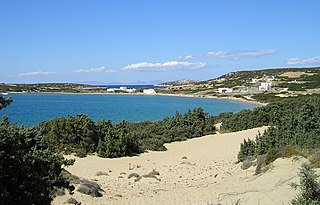
Juniperus macrocarpa is a species of juniper, native across the northern Mediterranean Region from southwestern Spain east to western Turkey and Cyprus, growing on coastal sand dunes from sea level up to 75 metres in altitude. A single, isolated tree is found further west, in a cliff in southern Portugal.
Dendrosenecio brassiciformis is a species of East African giant groundsel. It is endemic to the slopes of Aberdare Range and bearing fruit but once, and dying after. Once considered to be of the genus Senecio but since have been reclassified into their own genus Dendrosenecio.
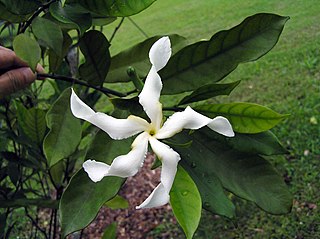
Tabernaemontana macrocarpa grows as a shrub or tree up to 30 metres (100 ft) tall, with a trunk diameter of up to 50 centimetres (20 in). The bark is yellowish brown, brown, grey-brown or grey. Its fragrant flowers feature combinations of cream, white and orange corolla lobes. The fruit is orange, with paired follicles, each up to 16 centimetres (6 in) in diameter. The specific epithet macrocarpa is from the Greek meaning 'large fruit'. Its habitat is forests from sea level to 1,500 metres (5,000 ft) altitude. Tabernaemontana macrocarpa has been used as arrow poison. The species is native to Thailand and Malesia.

Brassica hilarionis is a species of perennial cruciferous plant in the family Brassicaceae. It is endemic to Northern Cyprus and is classified as endangered. This species flowers from March to May. Its common name is St. Hilarion Cabbage.
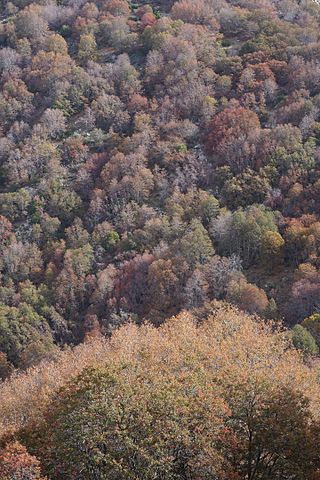
Nothofagus macrocarpa, commonly known as roble de Santiago or Santiago's oak, is a deciduous tree in the Nothofagaceae family that is endemic to the mountains of central Chile.
Pteralyxia laurifolia, the ridged pteralyxia, is a species of plant in the family Apocynaceae. It is endemic to the Island of Oahu in the Hawaiian Islands. The species is listed as vulnerable, threatened by habitat loss.

Syzygium effusum is a species of flowering plant in the myrtle family, Myrtaceae. It is a tree native to Fiji, New Guinea, the Santa Cruz Islands, and the Solomon Islands.














